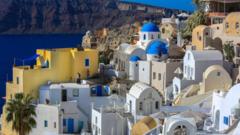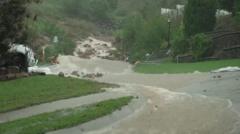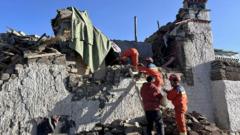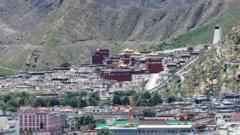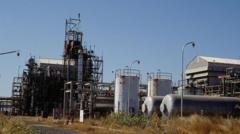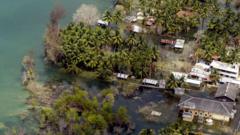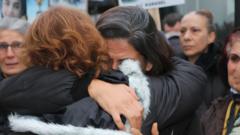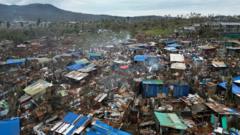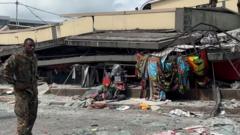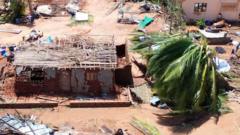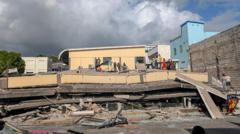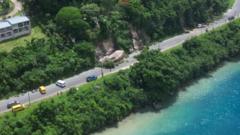**On the anniversary of the disaster, reflections on the lessons learned, and the everlasting impact on survivors and families.**
**A Survivor's Tale: Remembering the Tsunami that Changed Lives**
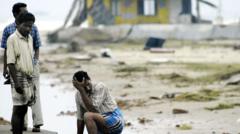
**A Survivor's Tale: Remembering the Tsunami that Changed Lives**
**A personal account of the devastating 2004 tsunami that struck the Andaman and Nicobar Islands, capturing the harrowing experience of those caught in its path.**
On Christmas Eve, 2004, I arrived in the stunning Andaman and Nicobar Islands, looking forward to a blissful holiday on Havelock Island, a place celebrated for its pristine beaches and clear waters. However, little did I know that within hours, my plans would unravel into chaos, marking the beginning of a tragic event that would forever alter the course of countless lives.
On Boxing Day, just as our ferry left the Phoenix Bay jetty in Port Blair, the boat jolted violently as the ground shook beneath us. The jetty which had safely anchored us moments before suddenly crumbled into the sea, along with a nearby watchtower and electricity pole. An unsettling stillness enveloped us as passengers, unaware of the catastrophic earthquake registering a 9.1 magnitude off the coast of Sumatra, which triggered a torrent of destruction across multiple nations.
As the tsunami ravaged coastal communities across Indonesia, Sri Lanka, and India, the remote Andaman and Nicobar Islands bore the brunt of nature's fury. The monstrous waves, reaching heights of up to 15 meters, engulfed low-lying areas just 15 minutes after the earthquake. While news channels flooded with reports of devastation elsewhere, we remained cut off from information about our own islands.
Only later did we learn that the island, home to approximately 400,000 residents—including isolated indigenous groups—suffered extensive devastation, with an official death toll of 1,310 and thousands reported missing. Our journey to Havelock Island abruptly shifted gears as we were informed that the jetty was submerged. We turned back, increasingly anxious about the unfolding crisis.
Returning to Port Blair revealed a stark scene of destruction. Buildings lay in ruins, overturned boats dotted the streets, and main roads bore gaping holes. Amidst the wreckage, a young girl shared her shocking encounter with the wave, barely escaping with her life, while families recounted the loss of their homes and livelihoods.
In the weeks following the disaster, I witnessed the enormity of the challenge that lay ahead for the survivors. Relief efforts were initiated as military forces mobilized to deliver supplies and support to devastated regions. However, the destruction of the islands' ferry jetties complicated rescue operations, isolating many from immediate aid.
As I spoke to the people who managed to escape with little more than the clothes on their backs, their heartbreaking stories of survival and loss underscored the tragedy's human dimension. I visited the grim landscape of Car Nicobar, where an entire air force base had been wiped away, leaving sorrowful families searching for missing loved ones amid a sea of scattered remnants.
Reflecting on that fateful ferry ride, I often wonder how differently my story might have unfolded. It serves as a solemn reminder of the unpredictability of nature and the resilience of the human spirit. As we mark the anniversary of the 2004 tsunami, the scars it left on individuals, communities, and nations endure, weaving a complex tapestry of loss, survival, and hope for healing.
On Boxing Day, just as our ferry left the Phoenix Bay jetty in Port Blair, the boat jolted violently as the ground shook beneath us. The jetty which had safely anchored us moments before suddenly crumbled into the sea, along with a nearby watchtower and electricity pole. An unsettling stillness enveloped us as passengers, unaware of the catastrophic earthquake registering a 9.1 magnitude off the coast of Sumatra, which triggered a torrent of destruction across multiple nations.
As the tsunami ravaged coastal communities across Indonesia, Sri Lanka, and India, the remote Andaman and Nicobar Islands bore the brunt of nature's fury. The monstrous waves, reaching heights of up to 15 meters, engulfed low-lying areas just 15 minutes after the earthquake. While news channels flooded with reports of devastation elsewhere, we remained cut off from information about our own islands.
Only later did we learn that the island, home to approximately 400,000 residents—including isolated indigenous groups—suffered extensive devastation, with an official death toll of 1,310 and thousands reported missing. Our journey to Havelock Island abruptly shifted gears as we were informed that the jetty was submerged. We turned back, increasingly anxious about the unfolding crisis.
Returning to Port Blair revealed a stark scene of destruction. Buildings lay in ruins, overturned boats dotted the streets, and main roads bore gaping holes. Amidst the wreckage, a young girl shared her shocking encounter with the wave, barely escaping with her life, while families recounted the loss of their homes and livelihoods.
In the weeks following the disaster, I witnessed the enormity of the challenge that lay ahead for the survivors. Relief efforts were initiated as military forces mobilized to deliver supplies and support to devastated regions. However, the destruction of the islands' ferry jetties complicated rescue operations, isolating many from immediate aid.
As I spoke to the people who managed to escape with little more than the clothes on their backs, their heartbreaking stories of survival and loss underscored the tragedy's human dimension. I visited the grim landscape of Car Nicobar, where an entire air force base had been wiped away, leaving sorrowful families searching for missing loved ones amid a sea of scattered remnants.
Reflecting on that fateful ferry ride, I often wonder how differently my story might have unfolded. It serves as a solemn reminder of the unpredictability of nature and the resilience of the human spirit. As we mark the anniversary of the 2004 tsunami, the scars it left on individuals, communities, and nations endure, weaving a complex tapestry of loss, survival, and hope for healing.

